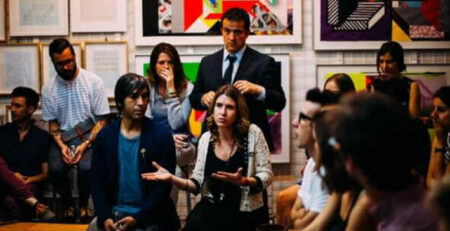The Transformative Impact of Hiring an Industrial Designer for Electronics
In the rapidly evolving electronics industry, the role of industrial designers is becoming increasingly crucial. Companies are recognizing the significant value these professionals add by merging aesthetics with functionality, thereby enhancing product appeal and usability. This introduction explores the transformative impact of hiring industrial designers in electronics, supported by relevant studies and insights into job demands.
Industrial designers specialize in developing concepts and designs for manufactured products. In the electronics sector, their work is pivotal in making complex technological devices accessible and appealing to consumers. They balance technical functionality with user-centric design principles to create products that are not only innovative but also intuitive to use.
Recent studies underscore the growing demand for industrial designers in electronics. For instance, a report by the Bureau of Labor Statistics projects a steady increase in employment opportunities for industrial designers, particularly in tech-focused industries. This trend is driven by the continuous need for new and improved consumer electronics that meet evolving user expectations.
The impact of industrial design on product success is well-documented. Research indicates that companies that invest in high-quality design enjoy a significant market advantage. According to a study by the Design Management Institute, design-driven companies have outperformed the S&P Index by 228% over ten years. This data highlights the economic value of integrating industrial design into product development strategies.
Moreover, the integration of industrial design in electronics not only enhances product appeal but also addresses practical considerations such as manufacturability, sustainability, and user ergonomics. These factors collectively contribute to a product’s market success and longevity, further justifying the investment in skilled industrial designers.
What specific skills should you look for in an industrial designer for electronics?
Identifying the right industrial designer for electronics involves a keen understanding of the specific skills that impact product development. Key skills include proficiency in CAD software, a deep understanding of material science, and a strong grasp of user experience principles. Additionally, creativity and problem-solving abilities are crucial for innovative design solutions that align with technical specifications and consumer demands.
Studies have shown that designers who excel in collaborative environments and possess strong communication skills can significantly enhance team dynamics and project outcomes. A report by McKinsey & Company emphasizes the importance of cross-functional collaboration in design, highlighting that successful product launches often involve designers working closely with engineers and marketers.
Furthermore, experience in the electronics industry can provide designers with insights into specific challenges such as miniaturization, thermal management, and electromagnetic compatibility. These competencies are essential for creating products that are not only aesthetically pleasing but also functionally robust.
It is also beneficial to look for designers who are adaptable and continuously seek to update their skills. The tech industry is fast-paced, and staying abreast of the latest design trends and technologies is crucial for developing relevant and competitive products.
Ultimately, the ideal candidate should have a portfolio that demonstrates a range of skills from conceptualization to product execution, showcasing successful integrations of design within complex electronic systems.
How does industrial design in electronics influence consumer behavior?
The influence of industrial design on consumer behavior is profound, especially in the electronics market. A well-designed product can significantly enhance user engagement and satisfaction, leading to higher sales and brand loyalty. Design elements such as form, color, and interface can evoke emotional responses that drive purchasing decisions.
Research from the Nielsen Norman Group illustrates how usability directly impacts consumer satisfaction and retention. Products that are easy to use and meet users’ needs are more likely to succeed in the market. Furthermore, innovative design can differentiate products in a crowded marketplace, attracting consumers looking for unique solutions.
Environmental sustainability in design also plays a critical role in influencing consumer choices. As awareness of environmental issues grows, consumers increasingly prefer products that are designed with eco-friendly materials and energy-efficient technologies. Industrial designers are pivotal in integrating these aspects into the design process, making products more attractive to environmentally conscious consumers.
The emotional connection that a product fosters with its users is another aspect where industrial design can have a significant impact. Products that evoke a sense of excitement, comfort, or satisfaction can create emotional ties, making them more memorable and preferred over others.
Overall, by understanding and influencing consumer behavior through strategic design, companies can enhance their product’s marketability and success, leading to better sales and a stronger market position.
What are the cost implications of hiring an industrial designer for your electronics projects?
Hiring an industrial designer involves initial costs that can vary depending on the designer’s experience and the project’s complexity. However, these costs are often offset by the significant benefits, such as enhanced product appeal and reduced time to market. Effective design can also lead to cost savings in production by optimizing materials and processes for manufacturability.
A study by the American Institute of Graphic Arts (AIGA) suggests that strategic investment in design can result in a substantial return on investment. Companies that integrate design thinking into their development processes tend to experience improved financial performance and market share.
For companies concerned about cost, options such as hiring freelance designers or contracting design firms for specific projects can provide flexibility. These approaches allow access to top-tier design skills without the overhead associated with full-time employment.
Moreover, investing in quality design from the outset can prevent costly redesigns and product failures, underscoring the long-term financial benefits of hiring skilled designers.
Ultimately, while the upfront costs of hiring an industrial designer can be significant, the potential for market success and financial return makes it a worthwhile consideration for any electronics company looking to innovate and compete effectively.

Can industrial design increase the lifespan of electronic products?
Yes, industrial design can significantly influence the lifespan of electronic products. By focusing on durability, repairability, and upgradability in the design phase, designers can extend a product’s usable life, which is not only cost-effective for consumers but also better for the environment.
Durability involves using high-quality materials and robust design principles that can withstand wear and tear. This ensures that the product remains functional for longer, reducing the need for frequent replacements.
Designing for repairability is another crucial aspect. Products that are easier to disassemble and repair encourage users to fix rather than replace them when issues arise. This approach can significantly extend the product’s lifespan and reduce electronic waste.
Upgradability is particularly relevant in the fast-evolving tech industry. Designing products with the potential for easy upgrades allows consumers to keep pace with new technologies without the need to purchase new products entirely. This not only enhances consumer satisfaction but also promotes a more sustainable consumption model.
Furthermore, incorporating modular designs can allow users to replace or upgrade specific components of a product rather than the entire system. This flexibility can greatly extend the product’s life and adaptability to changing user needs.
Overall, through thoughtful industrial design, companies can create more sustainable, durable, and adaptable products that appeal to environmentally conscious consumers and those looking for greater value from their purchases.
What trends are shaping the future of industrial design in electronics?
The field of industrial design in electronics is constantly evolving, driven by technological advancements and changing consumer expectations. Current trends include the integration of AI and IoT, which are making products smarter and more interconnected. Designers are now focusing on creating seamless user experiences across multiple devices, enhancing both functionality and user engagement.
Sustainability is another significant trend. There is a growing demand for eco-friendly materials and designs that reduce environmental impact. Industrial designers are increasingly tasked with finding innovative ways to incorporate these elements into electronic products without compromising performance or aesthetic appeal.
The push for personalization is also evident. Consumers are seeking products that can be customized to their preferences, whether in functionality, appearance, or interaction. This trend is leading designers to explore more adaptable and user-centric design approaches.
Additionally, the concept of emotional design is gaining traction. This approach focuses on creating products that evoke positive emotions and connections, thereby enhancing user satisfaction and loyalty.
Finally, the integration of advanced materials and technologies, such as flexible displays and wearable electronics, is opening new possibilities for innovative designs that could redefine user interactions with electronic products.
These trends highlight the dynamic nature of industrial design in electronics and underscore the importance of continuous innovation and adaptation in the field.
For more on AI tools in the workplace, check out The Ultimate Guide to Boost Your Productivity with AI Tools at Work.
Cost Implications
Hiring an industrial designer involves initial costs that can vary depending on the designer’s experience and the project’s complexity. However, these costs are often offset by the significant benefits, such as enhanced product appeal and reduced time to market. Effective design can also lead to cost savings in production by optimizing materials and processes for manufacturability.
Learn about choosing the right staffing company for your needs at How to Choose the Best Staffing Company.
Conclusion
The decision to hire an industrial designer for electronics is more than just an aesthetic choice; it’s a strategic business move that can lead to significant product and market advancements. From enhancing user experience to reducing production costs, the benefits are substantial. Industrial designers not only bring a wealth of creativity and technical expertise but also a user-centered approach to product development that can greatly enhance the commercial success of electronic products.
As technology continues to evolve, the role of industrial designers will become increasingly crucial in bridging the gap between complex electronic functionalities and user-friendly designs. Companies that recognize and invest in this valuable resource stand to gain a competitive edge in the market, driving innovation and capturing consumer interest in an ever-evolving industry landscape.
Ultimately, the collaboration between industrial designers and other departments can lead to more integrated and successful product outcomes, aligning both with consumer expectations and business objectives. The transformative potential of hiring an industrial designer for electronics is clear, making it a worthwhile consideration for any company looking to elevate its product line and thrive in the competitive electronics market.
In today’s competitive market, finding the right creative and marketing expert can be a challenge. But with icreatives, you’re in experienced hands. With 37 years in staffing and a track record of matching more than 10,000 employees to over 1,000 companies worldwide, we know how to connect you with the best. Plus, you only pay if you hire—there’s no risk, only results.Ready to find your perfect creative or marketing expert? HIRE WITH ICREATIVES today!












